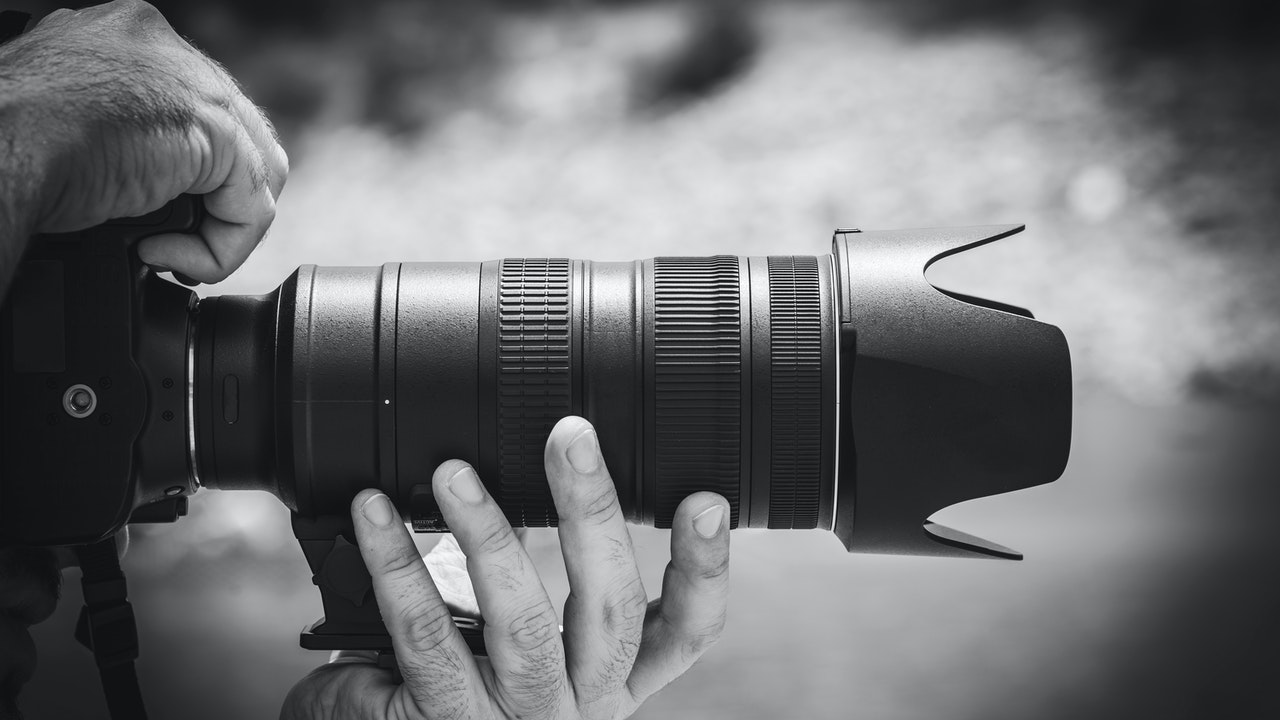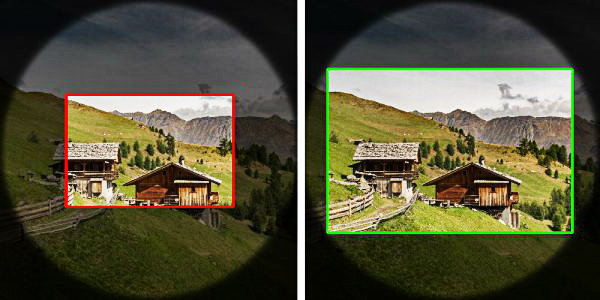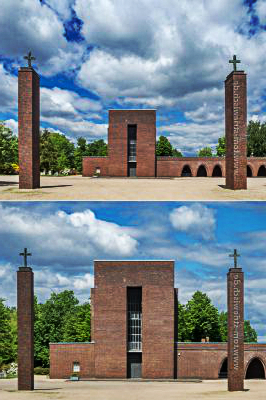Which lens for portraits?
The question "What is the right portrait photography lens, the right focal length for a portrait?" Is asked very often.
Most newcomers to the subject then realize pretty quickly based on the answers that nowadays many photographers just for portraits like a lens with great intensity use.(the best and cheapest 50mm lens from AMAZON perfect for portraits: Portrait Photography Lens)
With such lenses you can take pictures with large apertures. This makes it possible, on the one hand, to still take photos in low light and, on the other hand (and this is more important in terms of design) to achieve very small depths of field.
As a result, the portrayed person separates himself from the blurred background, an effect that is often used. (But not always right!)
But what about the focal length? What is the right focal length for a portrait?
Opinions differ widely. Among other things, because the question is not quite right.
The focal length alone is not enough to describe the “character” of a lens.
Let's look at it a little more systematically. Let's take a look at the topic of depth of field first and then look at the relationship between focal length, sensor size and angle of view.
So let's get into our Portrait Photography Lens: The Right Lens For Portraits (and The Right Distance) article shall we?
In advance
In the following, I will only deal with the general properties of lenses; I have deliberately left out special differences in the sharpness performance and imaging type of individual lens constructions. I am less concerned with a specific purchase recommendation than with general considerations that can then lead to a specific type of lens.
Depth of field
Nowadays it is often tried to expose the portrayed person by shallow depth of field. While this doesn't always make sense, it is common. (And if everyone does it ...)
Above all, you need high-speed lenses which, thanks to their large aperture openings (i.e. small f-numbers), ensure a small depth of field and thus a strong blurring of the background.
For the sake of completeness, I would like to add that you can create more blurring with the same f-number with a large sensor with otherwise the same conditions in terms of image angle (see below) and shooting distance.
And also the shooting distance (indirectly determined by the angle of view) influences the depth of field. But the distance is quasi “set” for the reasons below and can therefore not be used to influence the depth of field.
Focal length vs. Angle of view
When asked about the right lens in the various "social media" groups, specific lens recommendations are often made very quickly. Mostly well meant. (“Take XY, I have that too!” Or even “Take XY, I want to buy that too!).
Sometimes such a recommendation is also supplemented with sample photos, the quality of which, however, can hardly be judged after the "Facebook compression". Especially because you usually don't know about the circumstances surrounding the recording.
But can you really simply say, take this 85, this is the right one for portraits?
No, that doesn't work! We first have to know which camera should be used at all.
The size of the sensor of this camera model has a strong influence on which image section and which angle of view is shown.
Image circle and sensor
The angle of view depends on the focal length and sensor size.
The lens creates an image circle independent of the camera, of which a smaller sensor simply sees less.
 |
| Subject and the image circle projected from the lens into the camera |
The larger sensor covers a large part of the image circle. The smaller sensor, on the other hand, only records a section of the large image circle; the recorded image angle is smaller despite the same focal length.
We would have to use a shorter focal length to record the same section, the same angle of view.
Or we would have to take photos from a greater distance in order to map the houses in relatively the same size on the smaller sensor. However, changing the distance would have a major impact on the composition of the image. (see next chapter)
Specifying the focal length alone does not mean much. The choice of the "right" lens for portraits therefore depends heavily on the camera used.
Only when the sensor size is known, the depth of field and the recorded image angle are determined. And this angle of view recorded by the sensor has, indirectly, via the necessary / possible recording distance, a strong influence on the image composition.
Distance and design
The shooting distance has a great influence on the composition of the image, especially the spatial effect (“perspective”).
In the picture above I was closer to the two pillars in the foreground with the wide angle . In relation to this, I am further removed from the background, it is shown smaller.
The room now appears stretched , the foreground is shown much larger than the background.
In the picture below I have used a longer focal length (more precisely: a smaller angle of view).
But then I had to take a larger distance to the motif in order to be able to show the columns in the foreground picture in the same size as in the first picture.
Now the background appears much larger, the distance from foreground to background (and thus the impression of depth) has apparently shrunk.
The proportions in the picture and thus the spatial effect have changed massively due to a change in the shooting distance (due to different focal lengths). (An explanation of this phenomenon follows below.)
When applied to a portrait, the actual distances are smaller, but the effects are still clear.
With the same lens (more precisely: with the same focal length), only part of a head that is still completely imaged with a larger sensor is visible on the smaller sensor .
So we would have to take the portrait victim from a greater distance in order to have his head completely in the picture again.
And that would also change the spatial relationships in the portrait . Near parts of the face (nose) will appear smaller in relation to more distant parts (ears). (Illustration of this follows below)
Which section should be photographed?
In order to find the right focal length, we would have to know which section of the person and their surroundings should be shown at all. And above all, we also need to know what the spatial effect should be.
As already mentioned above, what kind of portrait would you like?
Only the face or even part of the face? Or half or the whole upper body?
Or a full-body portrait?
A group portrait?
To simplify the whole thing a little, I'll assume a portrait of a single person in the following. And assume that the desired sections of the picture should extend from the fully depicted head to the entire upper body.
Of course, the transitions are fluid.
And I also assume that the full available sensor area will be used. So no “digital zooms” or enlargements (or panorama techniques) are used.
What spatial effect is desired?
The next consideration revolves around the representation of the spatial depth in the image. Should this be visibly emphasized, the face with a large nose and small ears should be elongated. (Up to the caricature?)
Or is a more flat representation desired, in which the nose becomes smaller and smaller and the face becomes flatter - up to the "pancake face".
For a deep spatial effect, we would have to get close to the foreground. So with a head portrait we would have to get close to the nose. (And thus “getting on the skin” of the person portrayed, of course this also has an impact on the “feeling” of the person portrayed.)
For a flatter (not meant negatively) effect, on the other hand, we have to move further away from Him. [And at some point the (eye) contact breaks off and the communication with the portrayed becomes their observation.]
What does the distance change?
As seen above, the distance influences the relative reproduction of the proportions of the foreground to the background.
If I change the distance to the foreground, then of course I also change the distance to the background. But in relation to percentage, these changes differ significantly.
The easiest way to see the connection is with an example.
Suppose I am 100m from the background and 10m from the foreground. If I want to display the foreground twice as large, I have to halve the distance and approach it to 5m.
The distance to the foreground has halved.
On the other hand, I am still 95m away from the background, the change in the distance to the background and thus its change in size is only 5%.
The foreground becomes twice as large, the background changes only minimally.
The distances between nose and ear are not as big as in the example, but the change is still clearly noticeable. Especially in comparison.
The effects on the portrait
The desired image section (face / head / upper body / whole person) in the portrait, together with the focal length - or rather the angle of view that the lens depicts on the sensor - has a great influence on the required distance.
Quite banal: for a smaller section you have to get closer with the same viewing angle, for an overview you can move further away from the subject.
If, on the other hand, we want to photograph the same section (e.g. full-frame) in order to recognize the effect of different focal lengths (more precisely: different viewing angles), we have to get closer to the subject with a larger viewing angle (wide angle)
As can be seen above, the (changed) distance has a major impact on the composition of the image.
Because the distance changes the spatial effect in a photo very significantly. And the type of spatial reproduction also has a great influence on a portrait.
Nose and ear and confidence
These different proportions have a very strong influence on the effect of the person depicted. Large nose and relatively small ears indicate a short distance. This makes the viewer feel observed or even pressured, it is an uncomfortable proximity to a stranger. The other intrudes into their own personal areas, into the personal safety zone.
Of course you feel uncomfortable with that.
This uncomfortable feeling was also empirically investigated by psychologists (from the California Institute of Technology in Pasadena) some time ago.
The "right" focal length
If the goal is a harmonious and calm-looking portrait, many, probably even the majority, will prefer a picture from a “normal conversation distance” (anything from 80cm to two meters).
It is from this distance that we perceive the faces of most of the people we are concentrating on.
In order to image a head (possibly with parts of the upper body) from this distance in approximately full format, you need a light telephoto lens with a somewhat narrower section. A 25 ° angle of view fits there.
A focal length of around 85mm is suitable so that this angle of view is mapped to the small format ("full format").
But the transitions are fluid.
With 100mm you go a little further away and compress the space a little and with 70mm you go a little closer and get a more vivid reproduction. Can still fit well.
Most DSLRs and mirrorless system cameras (DSLMs), however, have a slightly smaller sensor ("APS-C format"). In order to be able to capture the same angle of view from the "portrait distance", a shorter focal length is then necessary.
Instead of approx. 80mm, approx. 50mm are then used.
And on the mFT (Micro-Four-Thirds) cameras I like to use, the smaller sensor makes the necessary focal length a little shorter.
In theory, a 40 is the “right” lens for portraits.
I then use, for example, 45mm to be able to take the same distance and thus achieve the same effect as with 85mm on my full-frame cameras. But as already written, the transitions are fluid.
More and too short
So far it has mainly been about portraits in which the head up to the entire upper body is photographed from a “conversation distance”.
With full-body portraits or group shots, on the other hand, you usually take larger distances in order to achieve a "harmonious" effect in terms of size.
Unfortunately, especially in tight indoor spaces, you cannot always go to the desired distance and then use the appropriate focal length. If you have to go closer in such a case, two design challenges arise.
Fat knees
On the one hand, the change in the proportions of the foreground to the background resulting from the shorter distance is mostly undesirable. You have to be careful when taking full-body shots of seated people.
From the short distance, the proportions appear "unusual" even within the limits of the person. Just as the nose is shown very large in a portrait, parts of the body that are closer to the camera also become very large in the picture. When people are seated, the result is often very massive knees and thick thighs.
In general, the less the shooting distance (and therefore: the shorter the focal length used), the greater the risk of this "unusual" display.
To mitigate this a bit, one can try to reduce the depth of the person. This can be done, for example, by sitting slightly to the side. Thighs and knees then no longer point directly to the camera but aim more or less at an angle past the camera.
... and small feet
If the shooting distance is shorter, the perspective tapering of the person (s) depicted is another problem.
The photographer often keeps his eye level when taking such pictures with the camera.
From a relatively short distance you need a wide angle and the camera has to be tilted down a little to get the whole body including the feet into the picture.
The head of the person to be portrayed is then perhaps only one meter away from the lens, but the distance to the feet is one and a half times or even double depending on the size of the photographer and / or the person to be portrayed.
The feet are shown correspondingly smaller in relation to the head. (This is basically the same effect as with the converging lines in architectural photography. Only in the other direction, quasi "negatively converging" lines.)
A large head and small feet, the outline looks like a triangle standing on its tip and rather conveys instability. It is the typical view of children when you look at them from "adult height".
This final print is only desirable or even advantageous in rare cases.
The actually simple solution then consists in a lower recording height.
Not necessarily from navel height, but possibly at chin or chest height of the person portrayed.
Be careful with people with large nostrils, in such a case you have to find a compromise level. ;-)
Or, much better, look around for a more distant location.
The right lens for portraits - conclusion
For a normal portrait (head / upper body) use a light telephoto lens with an angle of about 25 °. On small images ("full format") it would be around 80mm, on mMF around 40mm)
On APS-C cameras (whether DSLRs or DSLMs) it would be around 50mm. So that could also be the kit lens with 18-55mm. In terms of focal length, the 55mm fit.
However, for a stronger isolation from the background, the light intensity at 55mm is a bit tight. These lenses are often not very fast, f / 5.6 is often the largest aperture.
From the conversation distance, this does not result in a really strong blurring in the background. (In general: the further away the background is, the more blurred it becomes. With a clever placement of the person - not in front of the HG - you can force the blurring a little.
An alternative would be one of the cheaper " 50mm 1.8 " , which many manufacturers have on offer for less than USD 250.00, sometimes even less than USD 100.00




No comments
Post a Comment